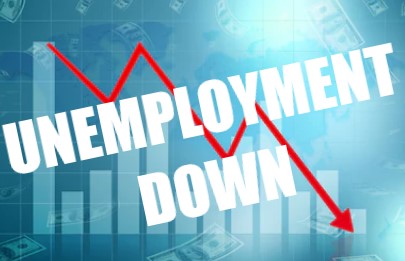
SPRINGFIELD – The Illinois Department of Employment Security (IDES) announced today that the unemployment rate fell -3.2 percentage points to 11.3 percent, while nonfarm payrolls added +93,200 jobs in July, based on preliminary data provided by the U.S. Bureau of Labor Statistics (BLS) and released by IDES. The June monthly change in payrolls was revised downward from the preliminary report, from +142,800 to +142,300 jobs. The June unemployment rate was revised downward from the preliminary report, from 14.6 percent to 14.5 percent.
The July payroll jobs estimate and unemployment rate reflects activity for the week including the 12th. The BLS has published FAQs for the July payroll jobs and the unemployment rate.
The state’s unemployment rate was +1.1 percentage points higher than the national unemployment rate reported for July, which was 10.2 percent, down -0.9 percentage points from the previous month. The Illinois unemployment rate was up +7.4 percentage points from a year ago when it was 3.9 percent.
In July, the three industry sectors with the largest over-the-month gains in employment were: Leisure and Hospitality (+65,300), Education and Health Services (+14,100) and Professional and Business Services (+8,400). The industry sectors with the largest payroll declines were: Manufacturing (-4,600), Construction (-3,300) and Information (-1,200).
“While we’re happy to see the unemployment rate and payrolls moving in the right direction, IDES remains committed to serving our claimants’ needs during this continued unprecedented time,” said Acting Director Kristin Richards. “As we move through this period of uncertainty, the Department is working as vigilantly as possible to rise to the challenge and provide benefits and employment services to those who need them.”
“While data from July demonstrate continued progress in the face of extraordinarily challenging economic times, it’s clear the pandemic is continuing to have an unprecedented effect on our economy. Evidence from other states has shown that ensuring public health is the quickest way to an economic recovery,” said Michael Negron, Acting Director of the Department of Commerce and Economic Opportunity (DCEO). “With that in mind, DCEO remains committed to investments that will support Illinois businesses and residents facing the most acute effects of this crisis, while making continued progress under Governor Pritzker’s Restore Illinois plan to safely reopen our state economy.”
Compared to a year ago, nonfarm payroll employment decreased by -508,000 jobs, with losses across all major industries. The industry groups with the largest jobs decreases were: Leisure and Hospitality (-164,000), Professional and Business Services (-81,300) and Trade, Transportation, and Utilities (-62,900). Illinois nonfarm payrolls were down -8.3 percent over-the-year as compared to the nation’s -7.5 percent over-the-year decline in July.
The number of unemployed workers fell sharply from the prior month, a -25.2 percent decrease to 705,600 but was up +179.8 percent over the same month for the prior year. The labor force was down -3.9 percent over-the-month and -3.2 percent over-the-year. The unemployment rate identifies those individuals who are out of work and seeking employment. An individual who exhausts or is ineligible for benefits is still reflected in the unemployment rate if they actively seek work.
In May, Governor Pritzker launched Get Hired Illinois, a new one-stop-shop website to help connect job seekers with hiring employers in real time. The site features virtual job fairs, no-cost virtual training, and includes Illinois Job Link (IJL), the state’s largest job search engine, which recently showed 83,747 posted resumes with 71,998 available jobs.
Seasonally Adjusted Unemployment Rates
Illinois Seasonally Adjusted Nonfarm Jobs – by Major Industry
• 2015-2019 seasonally adjusted labor force data for Illinois, and all other states, have been revised as required by the U.S. Bureau of Labor Statistics (BLS). The monthly historical revisions to state labor force estimates reflect new national benchmark controls, state working-age population controls, seasonal factors, as well as updated total nonfarm jobs and unemployment benefits claims inputs. Illinois labor force data were also smoothed to eliminate large monthly changes as a result of volatility in the monthly Census Population Survey (CPS) and national benchmarking. For these reasons, the comments and tables citing unemployment rates in previous news releases/materials may no longer be valid.
• Monthly seasonally adjusted unemployment rates for Illinois and the Chicago-Naperville-Arlington Heights Metropolitan Division are available here.
• Monthly 2011-2019 seasonally adjusted nonfarm payroll employment data for Illinois have been revised. To control for potential survey error, the estimates are benchmarked annually to universal counts derived primarily from unemployment insurance tax reports.
• Not seasonally adjusted jobs data with industry detail are available here. “Other Services” include activities in three broad categories: personal and laundry; repair and maintenance; and religious, grant making, civic and professional organizations. Seasonally adjusted data for subsectors within industries are not available.
About the Department of Employment Security
The Illinois Department of Employment Security (IDES) provides vital employment services to Illinois workers, employers, and job seekers with resources including Job Fairs and Illinois Job Link, analyzes and disseminates actionable Labor Market Information, and administers the Unemployment Insurance Program. To see the full range of services provided by IDES, and for the latest news concerning the department, visit IDES.Illinois.gov.














